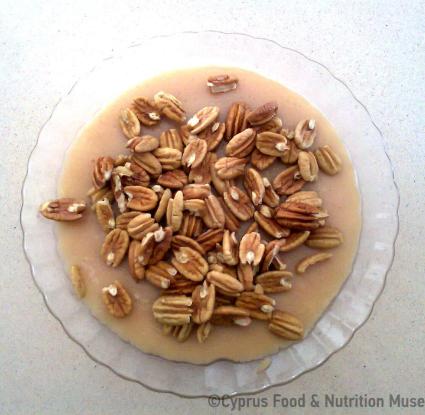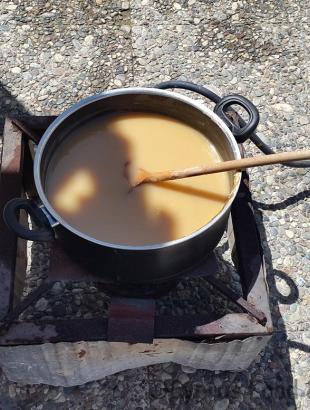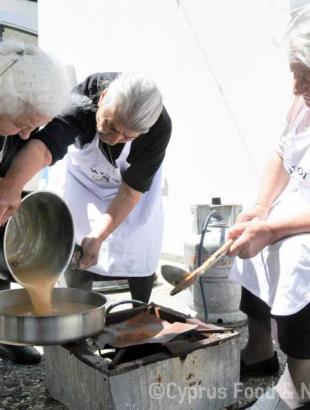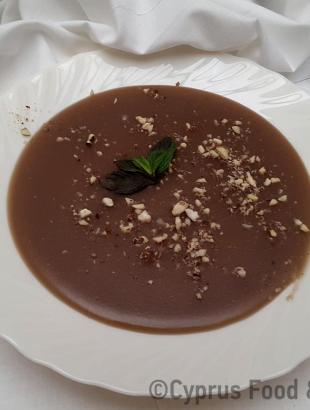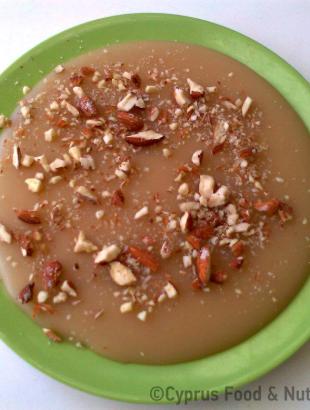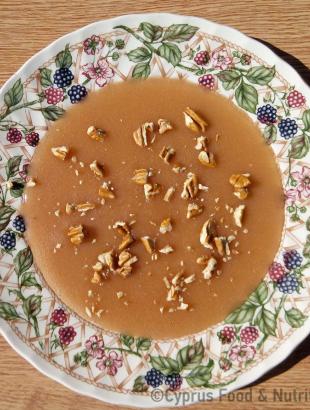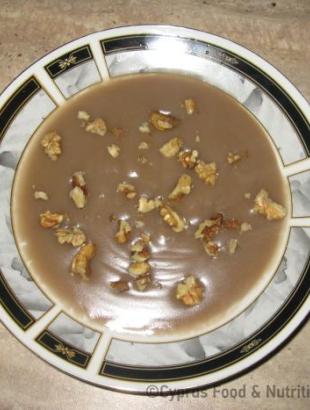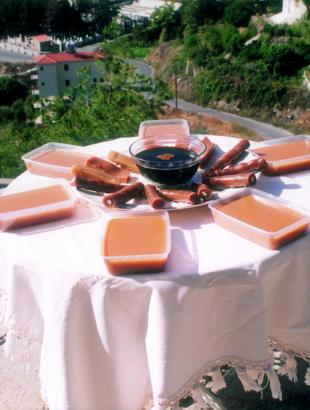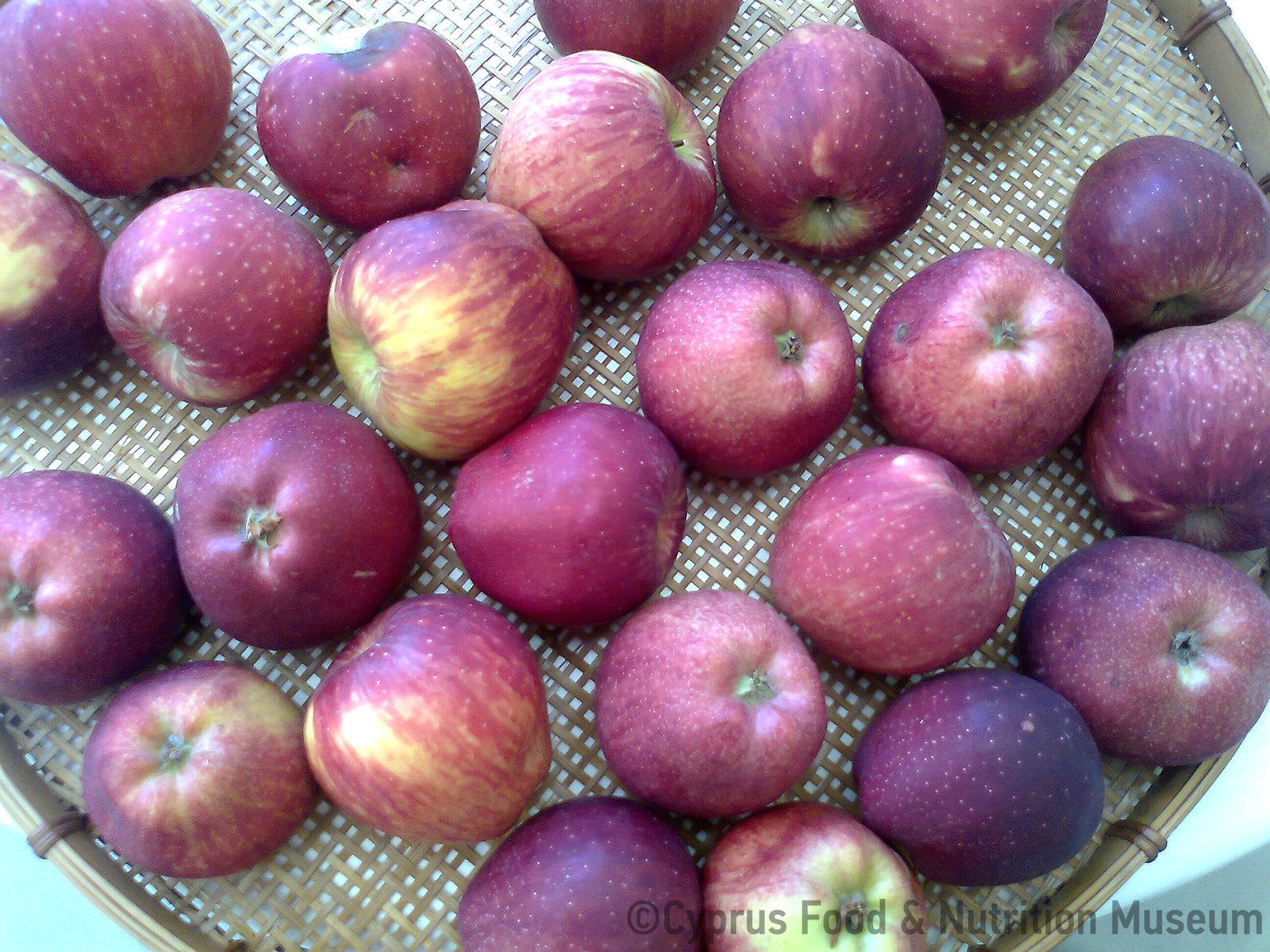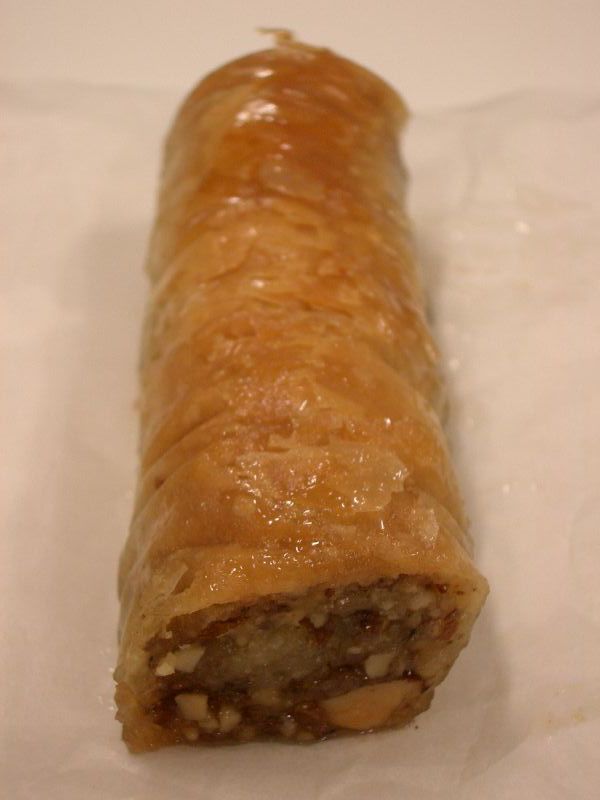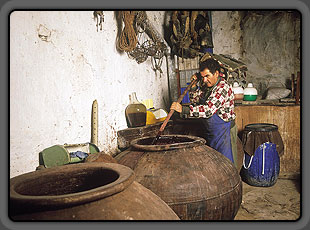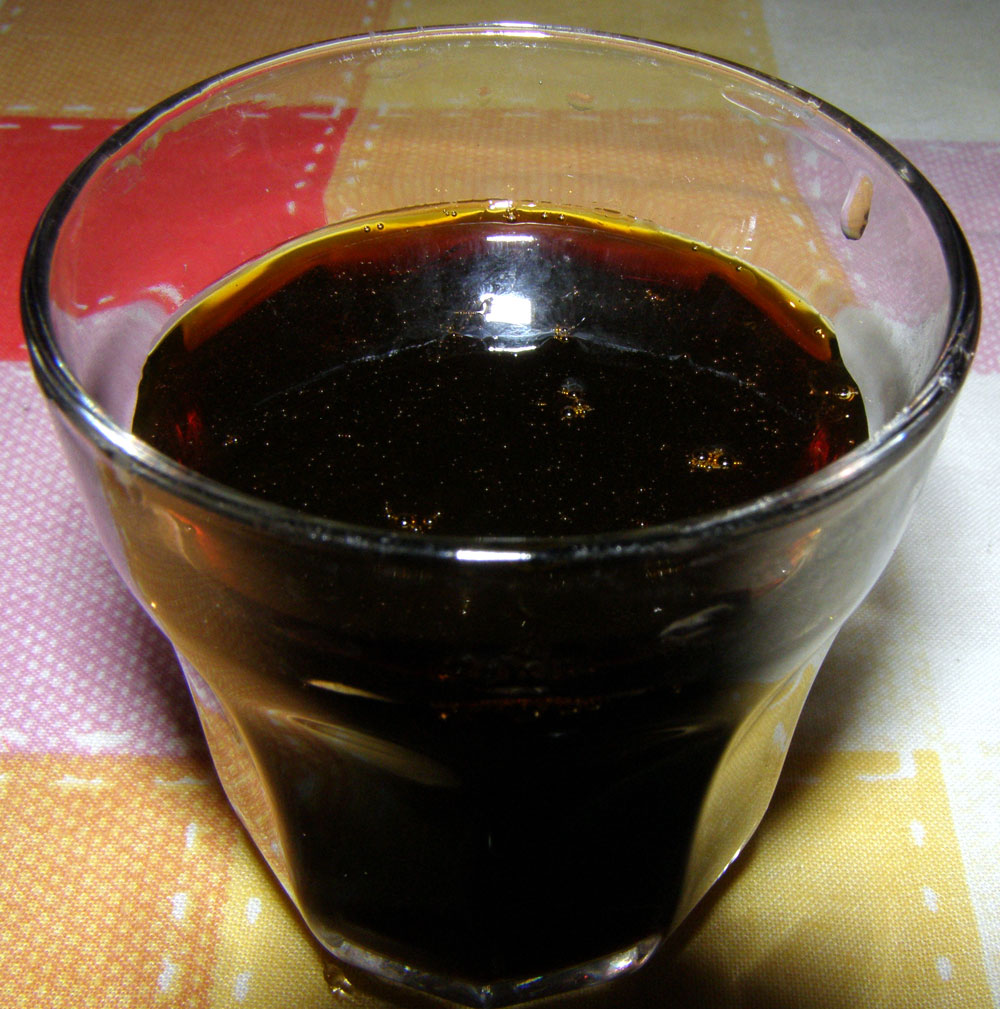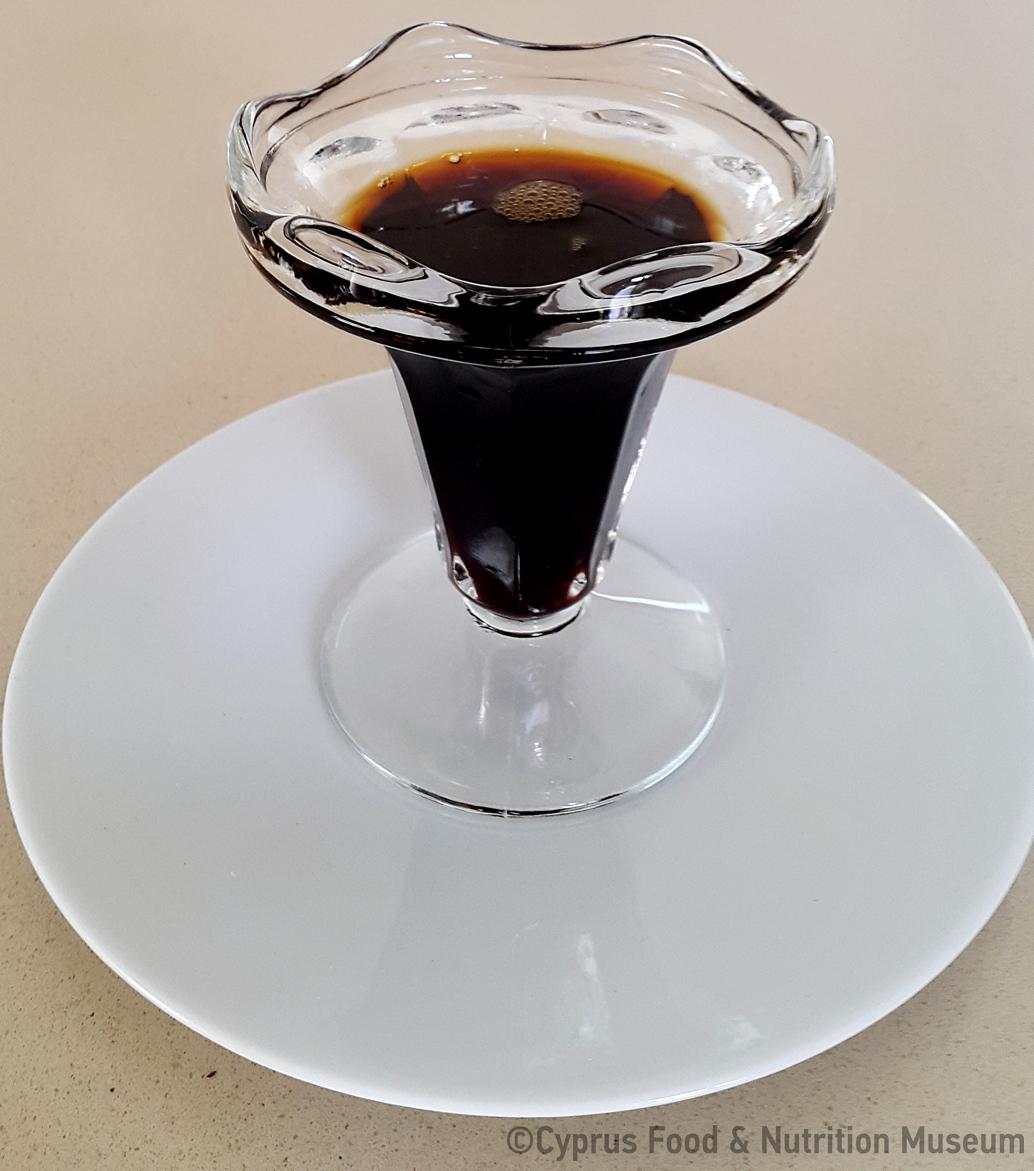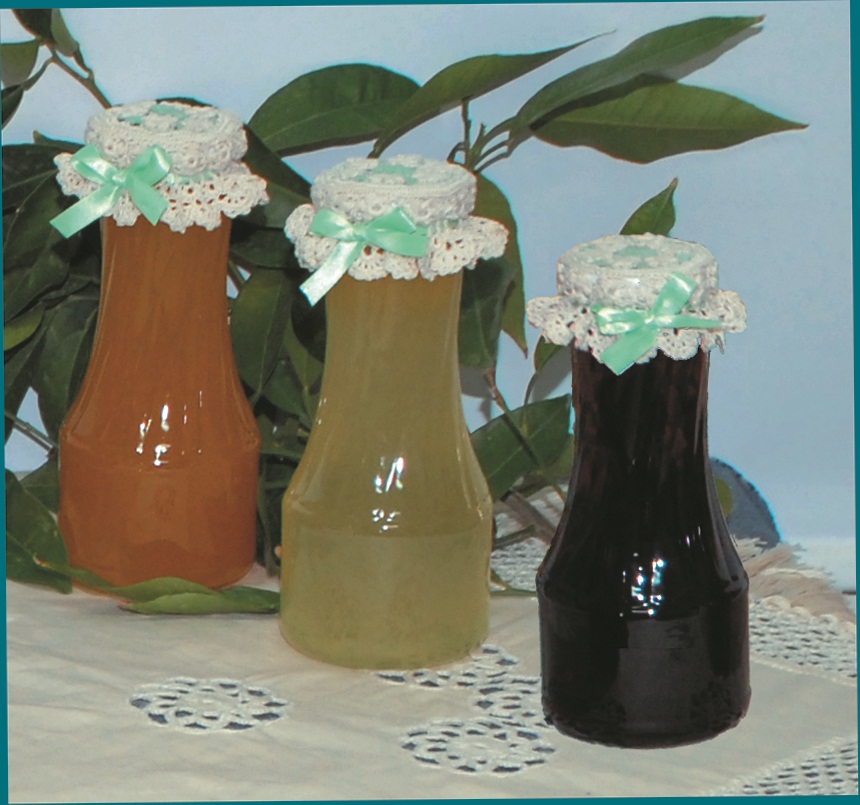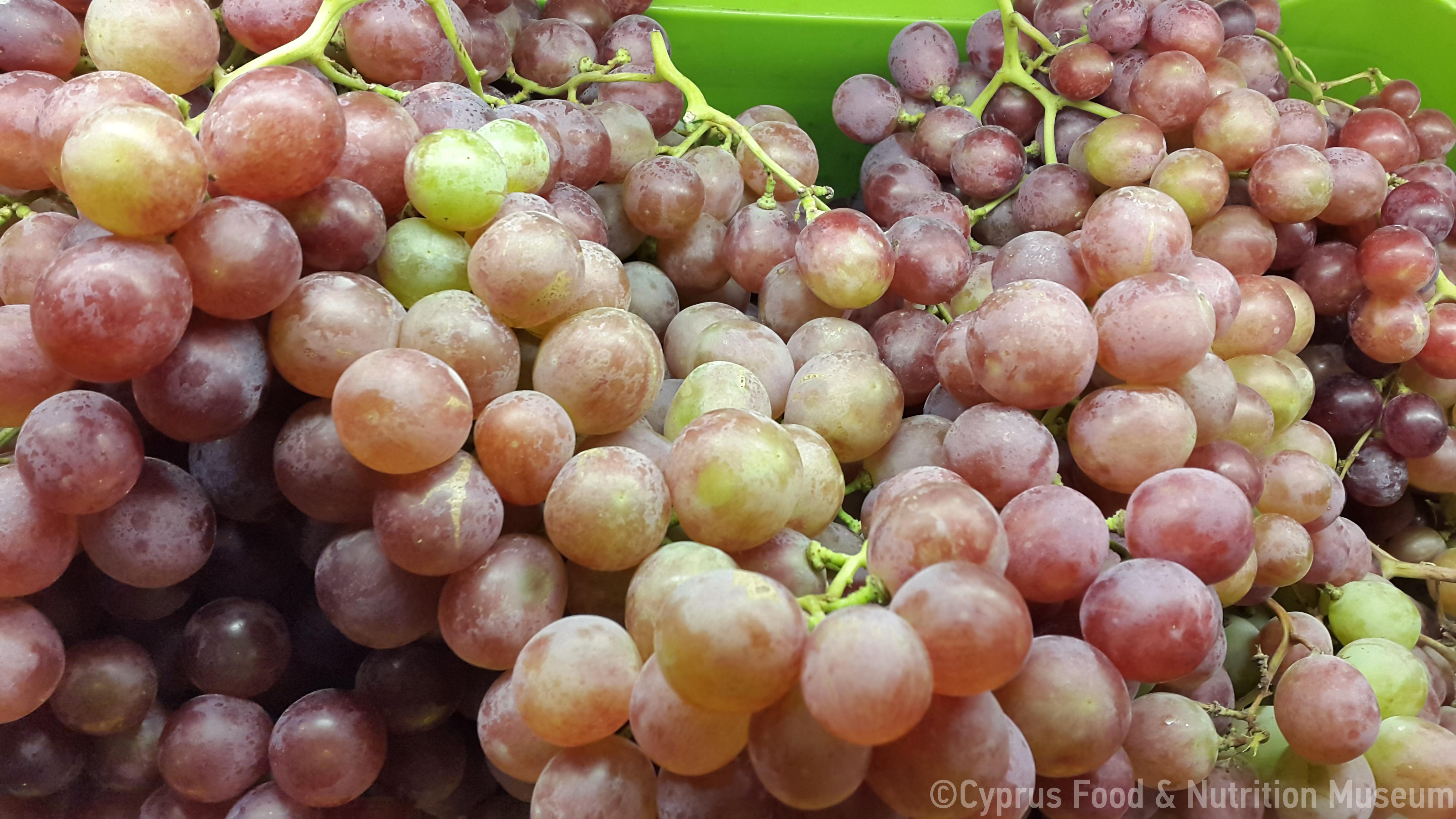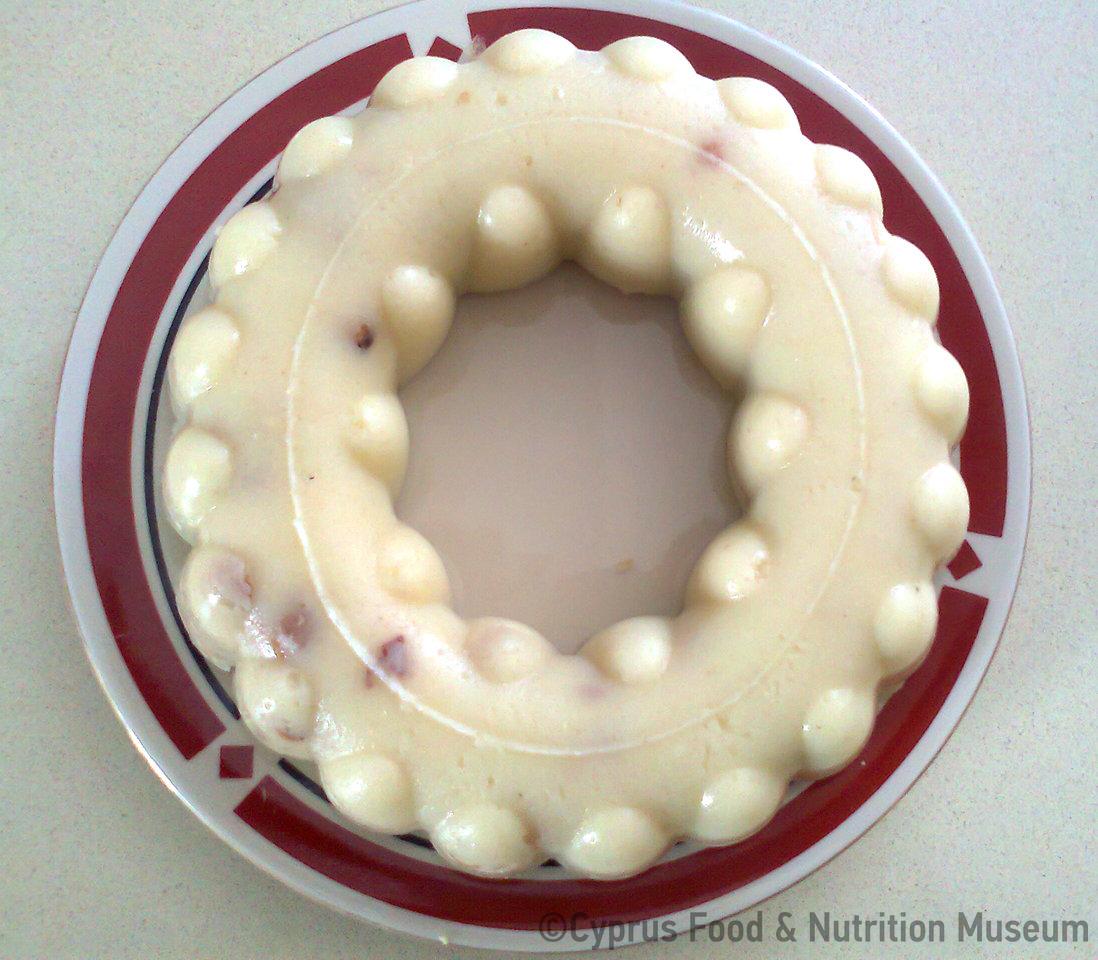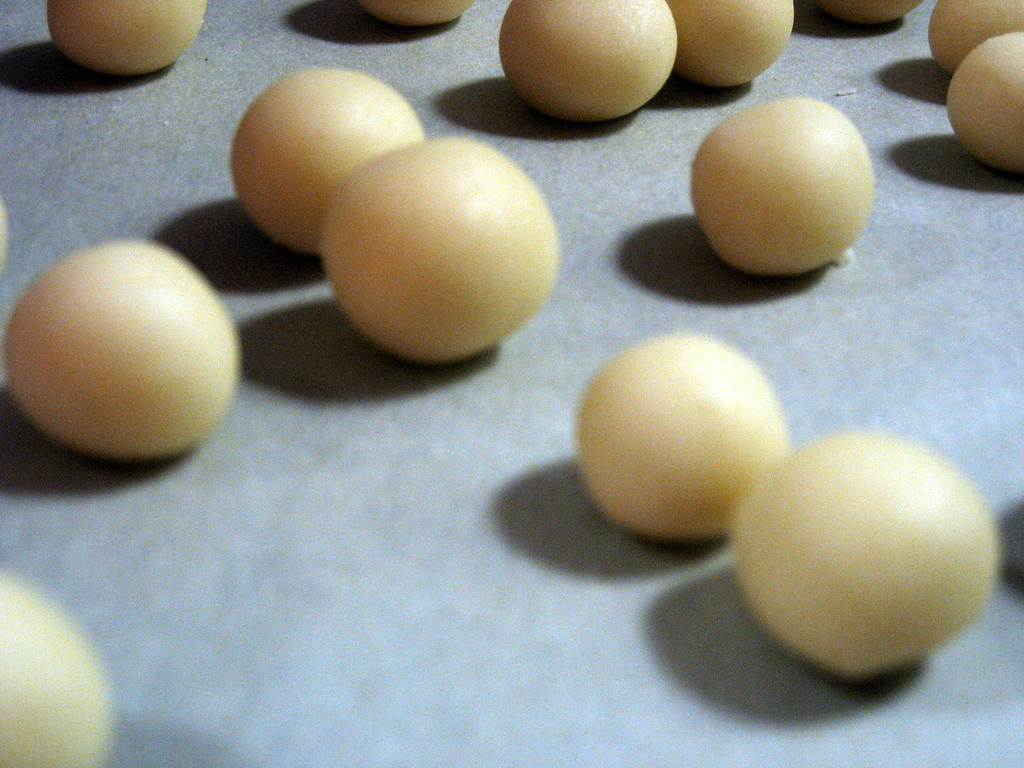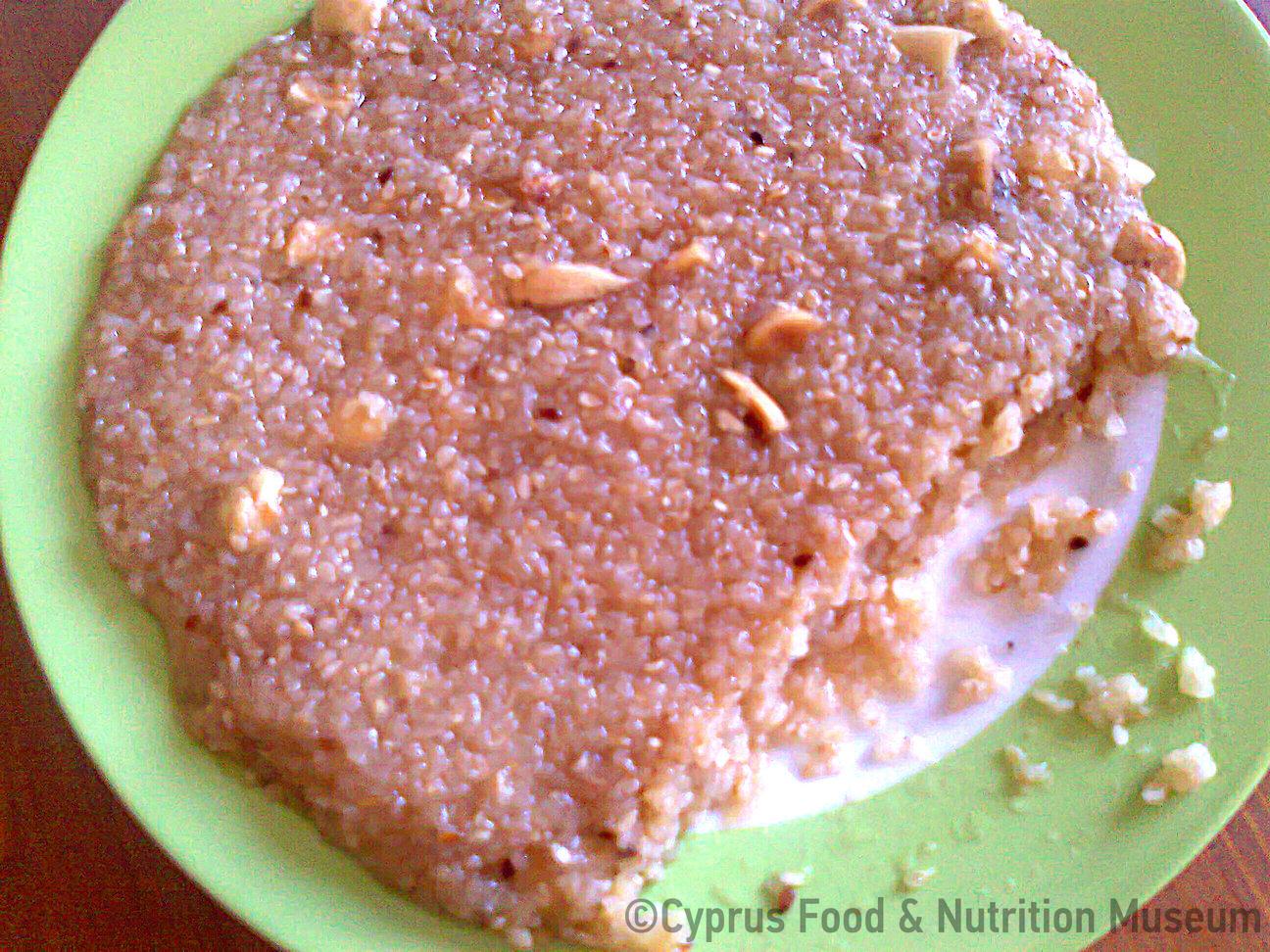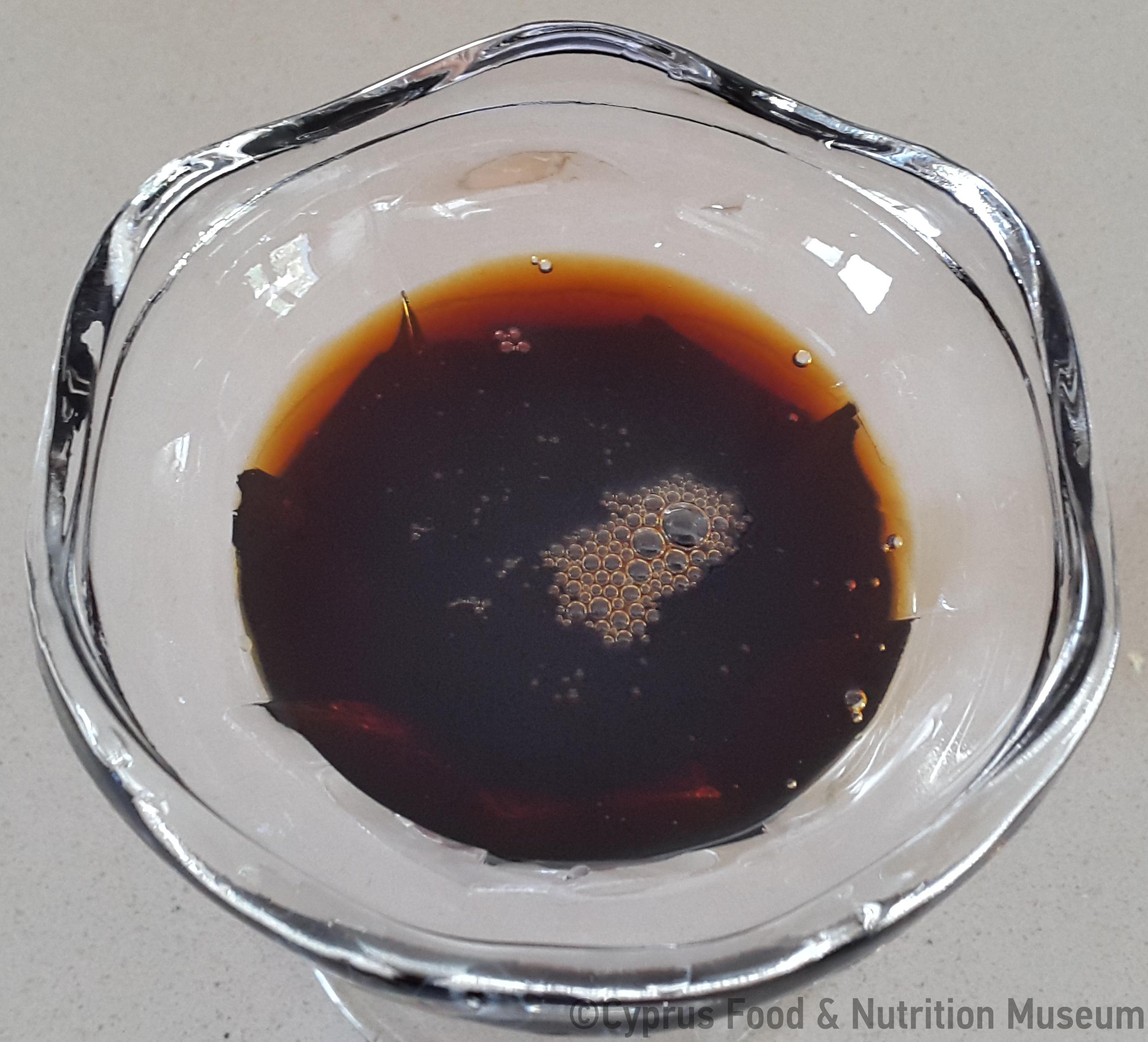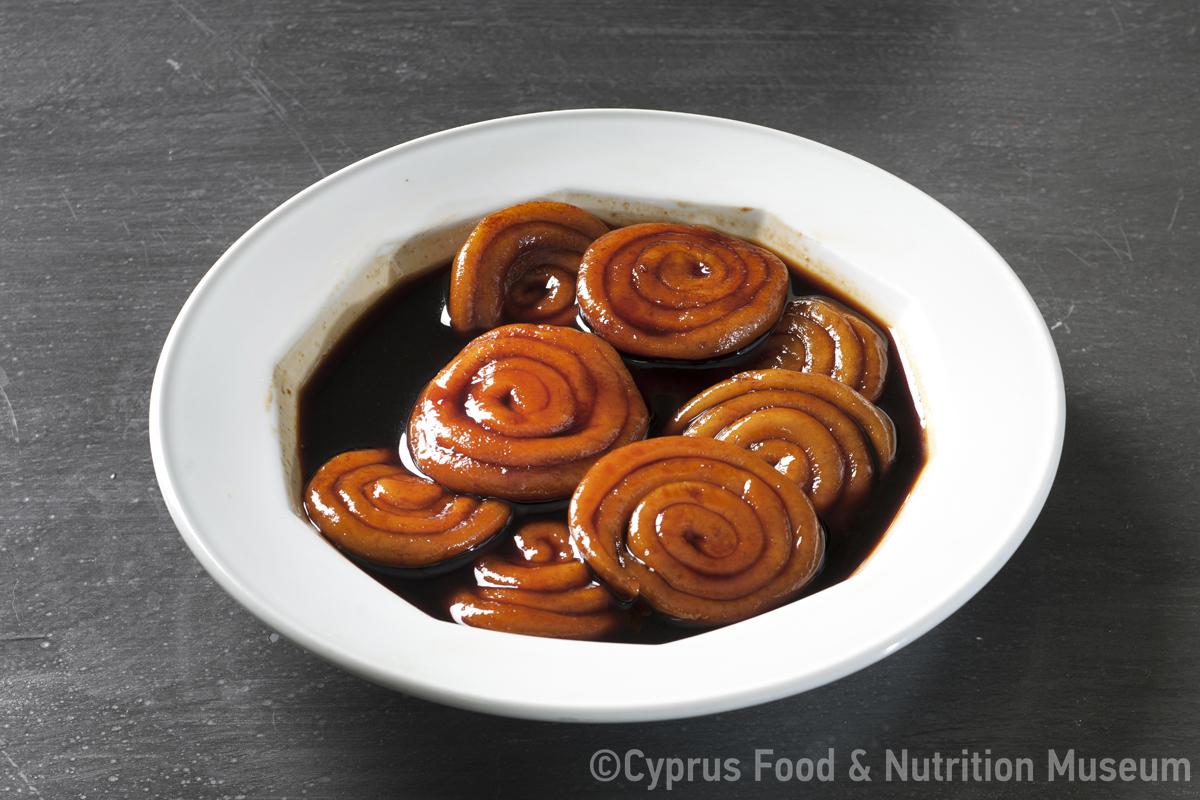A thin cream made of reduced grape must bound with flour. When ppalouzés is cut into pieces and dried in the sun, we get ‘kkioftérka’ (kioftéria).
Name - Recipe
Μουσταλευριά.
Moustalevria is a thin cream made of reduced grape must (boiled down to about half of the original quantity or until it is sweet enough) which is bound with flour or niseste (Kythraeotou 2013, 58).
Version A
10 kg grape juice
1 kg wheat flour
rose geranium, fresh basil and rose water (rose distillate)
Version B
8 litres grape must
1,5 kg flour
Rose geranium
Rosewater
Vanilla
Mastic (optional)
Coarsely ground almonds and walnuts
Version C
10 cups of grape must
10 tbsp village flour
1 sprig of rose geranium
rosewater (optional)
Coarsely ground almonds or walnuts
1 tablespoon of white soil
Version A Bring the grape must to a boil and add the flour. Stir constantly so that it does not stick. In the last few minutes, add the aromatics. Once it has thickened, remove from the heat and pour into deep plates or bowls. (MANRE 2006, 53-54)
Version B Pour 4 litres of the grape must in a pot and place on (wood) fire to boil. Pour the rest of the grape must in another pot and dissolve the flour in it. When the grape must comes to a boil, pour the rest of the must (already mixed with flour) to the pot and start to stir continuously so as not to stick to the bottom of the pot. Just before ppalouzé is done add the vanilla, some rose geranium and rosewater (mastic optional). Pour a bit of ppalouzé onto a plate and if it doesn't spread it means it's ready. Pour on deep plates or bowls and add some ground almonds or walnuts on top for decoration. (Androulla Christou, 58 years old from Agrilia, Limassol)
Version C In a bowl, dissolve the flour well in three cups of grape must. Put the rest of the must in a pot and bring to a boil. Once it starts to boil, leave for 3 minutes and then add the rest of the must (the mixture of flour dissolved in must) and mix well with a wooden spoon. When large bubbles form, pour in some rosewater and put some rose geranium and remove the pot from the heat. Pour the ppalouzé into a platter or into individual shallow dishes and serve it sprinkled with almonds or walnuts. Eat it hot or cold. Keep it in the refrigerator. (Kythraiotou 2013, 58).
Boiling.
Do not put the basil, rose water or vanilla to boil with the mixture as ppalouzé will become bitter. We add them towards the end. Keep the ppalouzé in a cool, dry place (refrigerator) because it is easily affected by fungus. Consume within a few days. (Spyroula Christodoulou, Potamiou, Limassol)
When ppalouzé is cut into pieces and dried in the sun, we have 'kioftéria' (MANRE 2006, 53-54).
Functional and symbolic role
The ppalouzé was prepared as soon as each household had finished with its harvest. In the past it was only produced for private use. Today, ppalouzé is made both by private individuals and by small and large producers of grape products, mainly whenever the harvest begins, i.e. from August to September or a bit earlier or a bit later than that (Spyroulla Christodoulou, Potamiou, Limassol).
Additional information and bibliography
Follow the link to watch the ppalouzé festival in Polystipos village in 2010 http://www.youtube.com/watch?v=-GNR0FzxI5w
Kythraiotou, F. (2013). Gastronomic guide of Marathasa, Ministry of Education and Culture - Pedagogical Institute, Nicosia.
Ministry of Agriculture, Natural Resources and Environment, Department of Agriculture (2006). Cypriot traditional preparations, Press and Information Office, Nicosia.
Oral testimoniy: Androulla Christou, 58 years old from Agrilia, Limassol. Recording: Zenovia Charalambous, October 2010. Ed. Stalo Lazarou.
Zenovia Charalambous, Maritsa Christodoulou, Stalo Lazarou / Varvara Yangou, Petroulla Hadjittofi

